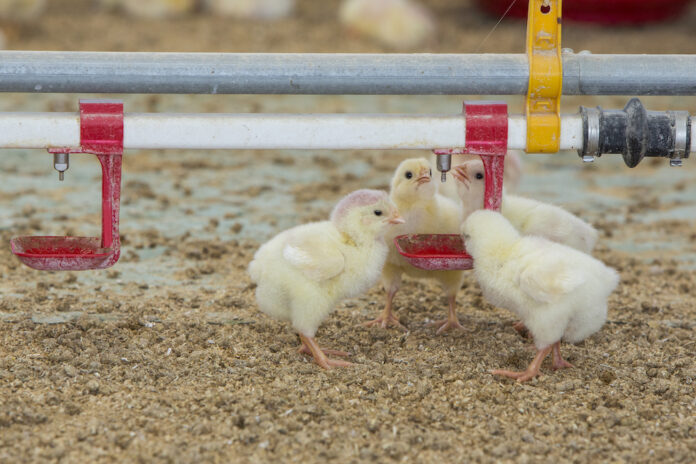
Becoming sustainable is a must for long-term viability and profitability, and the poultry industry has to meet the needs of the industry, consumers, and birds for economical, social, and environmental sustainability. All of them are core components to succeed in an ever-changing world.
Aitor Arrazola, Research biologist, Ph.D. in Animal Behaviour & Welfare
The organizational planning of the poultry industry is complex and varies over time. Since industrialization, early mindset in agricultural systems has been remarkedly productivity focused looking at maximizing production outcomes, even at a greater cost. However, more than a half century later, mentality is switching gears toward producing more efficiently while considering aspects of animal, human, and environmental health. Along these lines, meeting the needs of industry, animals, and consumers is paramount to enhance the long-term viability of a profitable, sustainable industry. To achieve this goal, three core aspects should be taken into account: economical sustainability, ecological sustainability, and social sustainability.
Meeting the needs of the industry, birds, and consumers
This current, multidisciplinary approach of economical, social, and ecological sustainability brings new challenges, opportunities, and trends that the poultry industry needs to acknowledge for success. Meeting consumers’ demand for healthy, safe, and welfare-friendly poultry products is necessary for public acceptability and competitiveness of the poultry industry. Moreover, resources depletion and livestock pollution on environmental systems have also become a global concern. Yet, growing population demand for meat products is on the rise, but this trend for higher need of poultry-based food products must be met without putting at risk economical, ecological, and social needs. In other words, a sustainable poultry industry should satisfy the growing demand for healthy, cost-effective food products from bids that are well taken care of within environmentally-friendly production systems.
This approach goes beyond the scope of only considering the needs of poultry industry by embracing the needs of birds raised for production and its impact on the environment. From this perspective, issues faced within any of these three core aspects (from producers to consumers) must be identified accurately and addressed suitably at any step during production, processing, or distribution. Firstly, all poultry products sold to consumers must be profitable for economical sustainability. Secondly, these products must meet consumers’ demands and expectations for food safety and welfare standards at a reasonably price. For this reason, understanding consumers’ attitudes toward poultry production systems is a must to support and reinforce public confidence and acceptability. The best approach to succeed at it is indeed being flexible, adjustable, and adaptable to upcoming challenges regarding consumer needs, attitudes, and expectations. Current consumer concerns, for example, demand proof of food products that are ethically produced including care for animal welfare, environment, work safety, and fair trade. Indeed, responsible stewardship addressing these issues along the production chain is so much needed to move forward and guarantee continued success of the poultry industry. Thirdly, poultry industry is responsible for providing appropriate management and conditions to support birds’ health and well-being. To do so, effective management should be in place throughout the production cycle (from breeder to production flocks) to maximize birds’ health, performance, and welfare. This tripartite approach considering the needs of the industry, consumers, and birds brings together a novel comprehensive insight so the industry can develop poultry products that are economically and socially sustainable.
Aiming for environmental sustainability
The need of caring for the environmental health rises due to social concerns about limited global resources, livestock footprint and pollution, and consequences on biodiversity and ecological functioning. These challenges offer new opportunities to improve waste management and disposal, enhance litter and air quality as well as reduce carbon and nitrogen footprint. Indeed, resources employed by the poultry industry must be used efficiently to be profitable and refinements in resources management and usage can help control and minimize production costs. For example, further improvements in feed efficiency and advancements to reduce feed wastage can allow industry to produce poultry products from broilers and table-egg layers at a lower cost. Energy inputs and water usage should also be contemplated from an environmental and economic point of view, not only throughout production but during product processing and distribution as well. Certainly, due to changing rainfall patterns and rising temperatures associated with climate change worldwide, the amount of clean water that poultry industry uses for production and processing should be reviewed and find pioneering solutions to reduce clean water usage. Same considerations apply to the energy inputs required for product development from farm to fork. Lastly, understanding the relationship between production practices and environmental impact is needed to prevent negative side consequences on ecosystems and societies.
Evaluating the needs of the industry, consumers, and birds should be considered periodically to assess current challenges and foresee upcoming ones. For long-term sustainability, maintaining a clear direction toward addressing these needs is essential as well as staying flexible and open to adjust in case of emerging challenges or if needs change. To conclude, poultry industry should aim to be productive and profitable while being cost effective by optimizing productivity while reducing costs, supporting poultry health and welfare, enhancing resource effectiveness, and minimizing the impact of industry activity on the environment.












